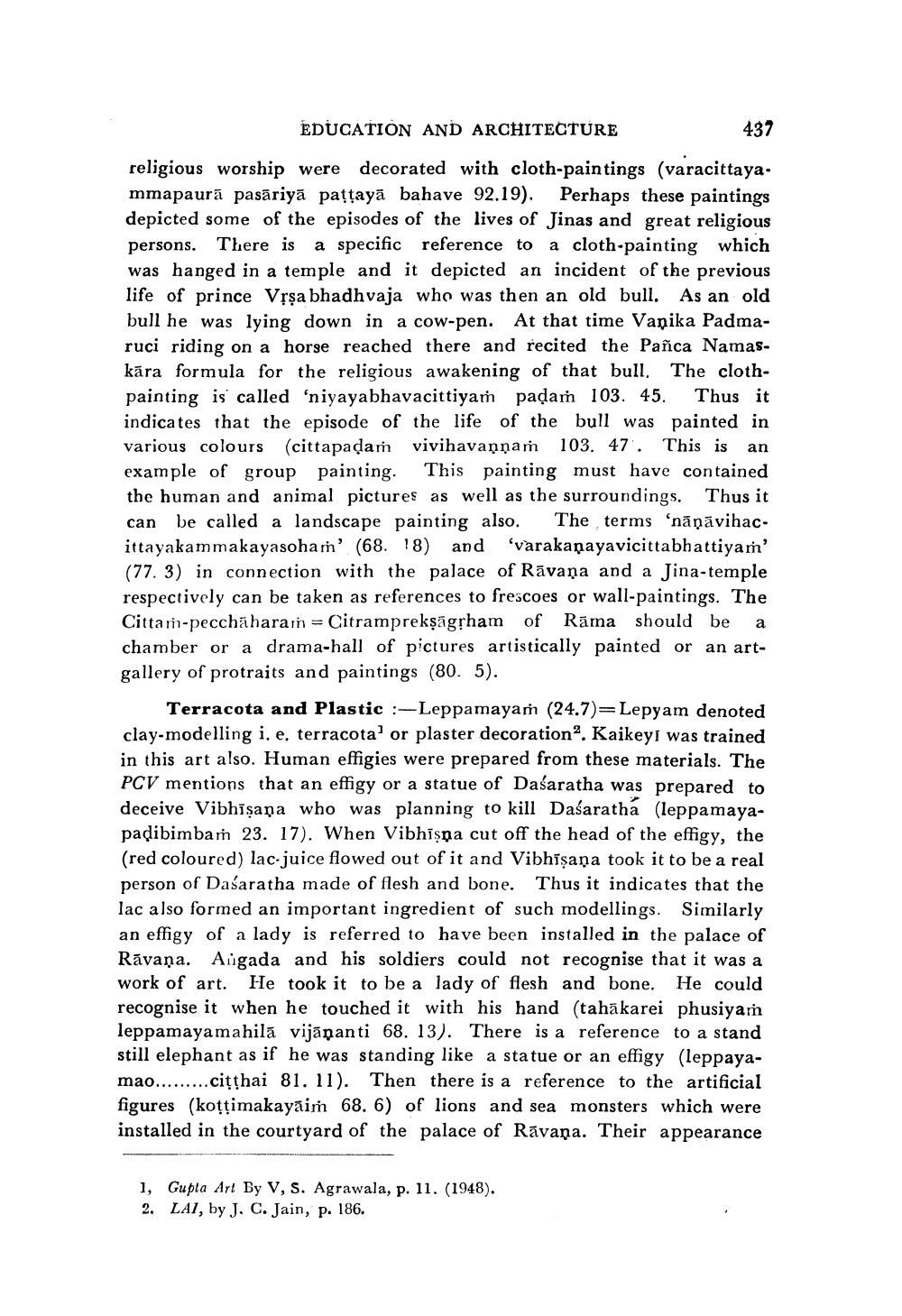________________
EDUCATION AND ARCHITECTURE
437
religious worship were decorated with cloth-paintings (varacittaya. mmapaurā pasāriyā pațțayā bahave 92.19). Perhaps these paintings depicted some of the episodes of the lives of Jinas and great religious persons. There is a specific reference to a cloth-painting which was hanged in a temple and it depicted an incident of the previous life of prince Vrşa bhadhvaja who was then an old bull. As an old bull he was lying down in a cow-pen. At that time Vanika Padmaruci riding on a horse reached there and recited the Pañca Namaskāra formula for the religious awakening of that bull. The clothpainting is called 'niyayabhavacittiyaṁ padaṁ 103. 45. Thus it indicates that the episode of the life of the bull was painted in various colours (cittapada vivihavaņņam 103. 47. This is an example of group painting. This painting must have contained the human and animal pictures as well as the surroundings. Thus it can be called a landscape painting also. The terms 'nāņāvihacittayakammakayasoham' (68. 18) and 'varakaņayavicittabhattiyam' (77. 3) in connection with the palace of Rāvana and a Jina-temple respectively can be taken as references to frescoes or wall-paintings. The Cittar-pecchāharain = Citramprekşāgpham of Rāma should be a chamber or a drama-hall of pictures artistically painted or an artgallery of protraits and paintings (80. 5).
Terracota and Plastic :-Leppamayam (24.7)=Lepyam denoted clay-modelling i, e, terracotaor plaster decoration. Kaikeyi was trained in this art also. Human effigies were prepared from these materials. The PCV mentions that an effigy or a statue of Dasaratha was prepared to deceive Vibhīşana who was planning to kill Dasaratha (leppamayapadibimbar 23. 17). When Vibhişpa cut off the head of the effigy, the (red coloured) lac-juice flowed out of it and Vibhîşana took it to be a real person of Dasaratha made of flesh and bone. Thus it indicates that the lac also formed an important ingredient of such modellings. Similarly an effigy of a lady is referred to have been installed in the palace of Rāvana. Augada and his soldiers could not recognise that it was a work of art. He took it to be a lady of flesh and bone. He could recognise it when he touched it with his hand (tahākarei phusiyam leppamaya mahila vijānanti 68. 13). There is a reference to a stand still elephant as if he was standing like a statue or an effigy (leppayamao.........cityhai 81. 11). Then there is a reference to the artificial figures (koțțimakayāim 68. 6) of lions and sea monsters which were installed in the courtyard of the palace of Rāvana. Their appearance
1, Gupta Art By V, S. Agrawala, p. 11. (1948). 2. LAI, by J. C. Jain, p. 186.




